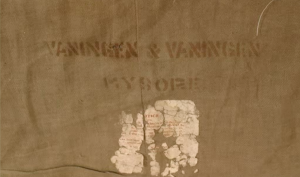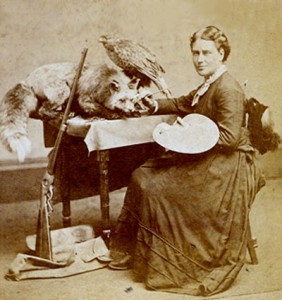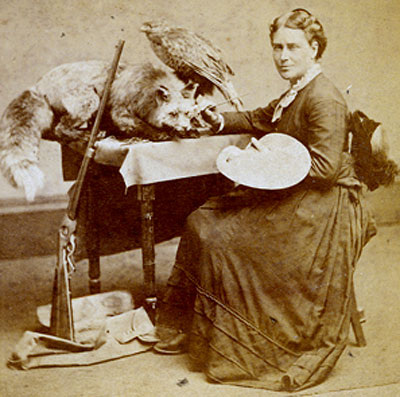The word taxidermy is of Greek origin “taxi” and “derma”, which means arrangement of skin. Taxidermy is a common term that describes the techniques and methods to reproduce or mount three dimensional representations of dead animals for exhibition or for study purpose. It can be performed on all vertebrates including fish, birds, amphibians, reptiles and mammals. There has been significant improvement in the art of taxidermy over the last century. Taxidermists who are well known for their valuable services in the field of taxidermy are mentioned below
Van Ingen & Van Ingen (1900 – 1998).
 Van Ingen & Van Ingen was South Indian Taxidermy Company located in Mysore founded by Eugene Van Ingen and later run by his three sons Botha, De Wet and Joubert Van Ingen. They were famous for preserving their hunt in the most natural poses. The company was well known for their large number of leopard and tiger mounts that are now spread all over the world in the form of full mounts, head mounts, rug mounts with heads and flat animal rugs. In its heyday the company was regarded as one of the best in taxidermy and served not only the Maharajas of India but also numerous nobles from all over the world.
Van Ingen & Van Ingen was South Indian Taxidermy Company located in Mysore founded by Eugene Van Ingen and later run by his three sons Botha, De Wet and Joubert Van Ingen. They were famous for preserving their hunt in the most natural poses. The company was well known for their large number of leopard and tiger mounts that are now spread all over the world in the form of full mounts, head mounts, rug mounts with heads and flat animal rugs. In its heyday the company was regarded as one of the best in taxidermy and served not only the Maharajas of India but also numerous nobles from all over the world.
Martha Ann Maxwell (1831-1881)

Martha was a first women field naturalist who acquired and prepared her own samples. In 1860 she traveled to Colorado Territory during the first sign of Pike’s Peak Gold Rush. Her inspiration was the work of a local taxidermist after which she started skinning animals for artistic endeavors. She was a talented hunter who devised modern procedures to skin and mount the remains of animals. It was her work that initiated the basis of modern taxidermy. She learned about the otus asio maxwelliae (Maxwell Owl) including other species not formerly known to exist in Colorado. She presented her collection of preserved birds and animals at both the Centennial Exposition in Philadelphia and Colorado Agricultural Society Fair in Denver. Martha remained a vegetarian all through her life.
Louis Dufresne (1752-1832)
One of the famous naturalists known to travel on the extraordinary journey Astrolabe ship was Louis Dufresne. The ship sailed to islands of Trinidad, Madeira, and Tenerife, rounded at Cape Horn, lingered at Concepción and finally docked at the Hawaiian Islands. It continued its journey along the northern coast of America and all the way up to Alaska. The expedition sailed across the Pacific Ocean and Atlantic Ocean and eventually returned to France with profound knowledge. In early 1790, Dufresne became a well known taxidermist and worked as a curator at Muséum national d’Histoire naturelle in Paris. He introduced the idea of arsenic soap to preserve birds. This technique enabled the museum to put together one of the world’s biggest collection of birds. Dufresne had a private collection in which he compiled approximately 12,000 insects, 1600 bird specimen and nearly 800 eggs from all over the world. His collection included assortment of corals, shells, fossils and amphibians.

